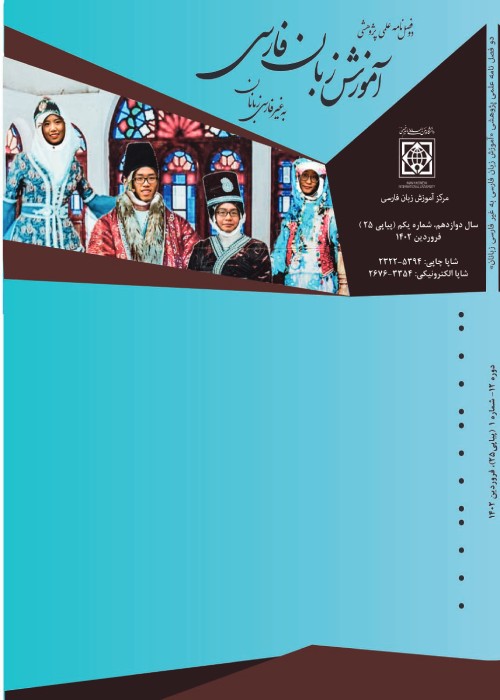Evaluating the use of lexical coherence tools in Persian textbooks of junior high school
In the present study, contents of Persian textbooks of junior high school (seventh, eighth and ninth grades) were examined regarding the use of lexical coherence tools within the framework of Halliday and Hasan's Functional linguistics theory (1976). The research was conducted in a content analysis method and was descriptive. From each of the three books, three chapters were randomly selected. All lexical coherence tools were identified and tallied in the textbooks. The percentage of occurrence of each instrument was also obtained. The results showed that in the seventh, eighth, and ninth grade Persian books 158, 125, and 120 lexical coherence tools were used, respectively. In the seventh grade book, collocations and opposites were the most and the least commonly used instruments, respectively. In the eighth grade book, collocation and synonymy were the most and the least used instruments, respectively. In the ninth grade books, hyponymy and collocation were the most and the least used instruments, respectively. For more accurate statistical analysis, Chi-square test was used to explore the distribution of lexical coherence tools in each of the books. Based on the results obtained at the level of p <0.05, there was a significant difference between the distribution of lexical coherence instruments in each of the books. Extended Abstract: In this research, the content of Iranian Junior High School Persian textbooks (Grade 7, 8 and 9), published in school year 97-98, is studied in terms of Lexical Cohesive Devices in the framework of Halliday and Hassan’s functional Linguistics.
This investigation is conducted by analyzing content in a descriptive way. And the content includes three lessons randomly picked from the above books. Cases that are considered as Lexical Cohesive Devices from Halliday and Hassan’s perspective, were extracted from all three books. Frequency and percentage of usage of each device was diagnosed as well. After analyzing the data, we came to conclusion that the 7th grade book with 158 cases of Cohesive Devices, the 8th grade book with 125 cases and the 9th grade Persian textbook with 120 cases, respectively achieved the first, second and third rank in using Lexical Cohesive Devices.
In 7th grade Persian textbook, collocations were the most and antonyms were the least used Cohesive Devices; collocations and synonyms were distinguished as the most and the least useful Lexical Cohesive Devices in 8th grade, and in 9th grade Persian textbook, hyponymy was the most used Device and collocations were the least.
In order to achieve a more exact statistical analysis on distribution of Lexical Cohesive Devices in each book, the Chi-Square Test was used. Based on the results, in pth, 8th, 9th grade Persian textbooks’ distribution of Lexical Cohesive Devices
- حق عضویت دریافتی صرف حمایت از نشریات عضو و نگهداری، تکمیل و توسعه مگیران میشود.
- پرداخت حق اشتراک و دانلود مقالات اجازه بازنشر آن در سایر رسانههای چاپی و دیجیتال را به کاربر نمیدهد.



